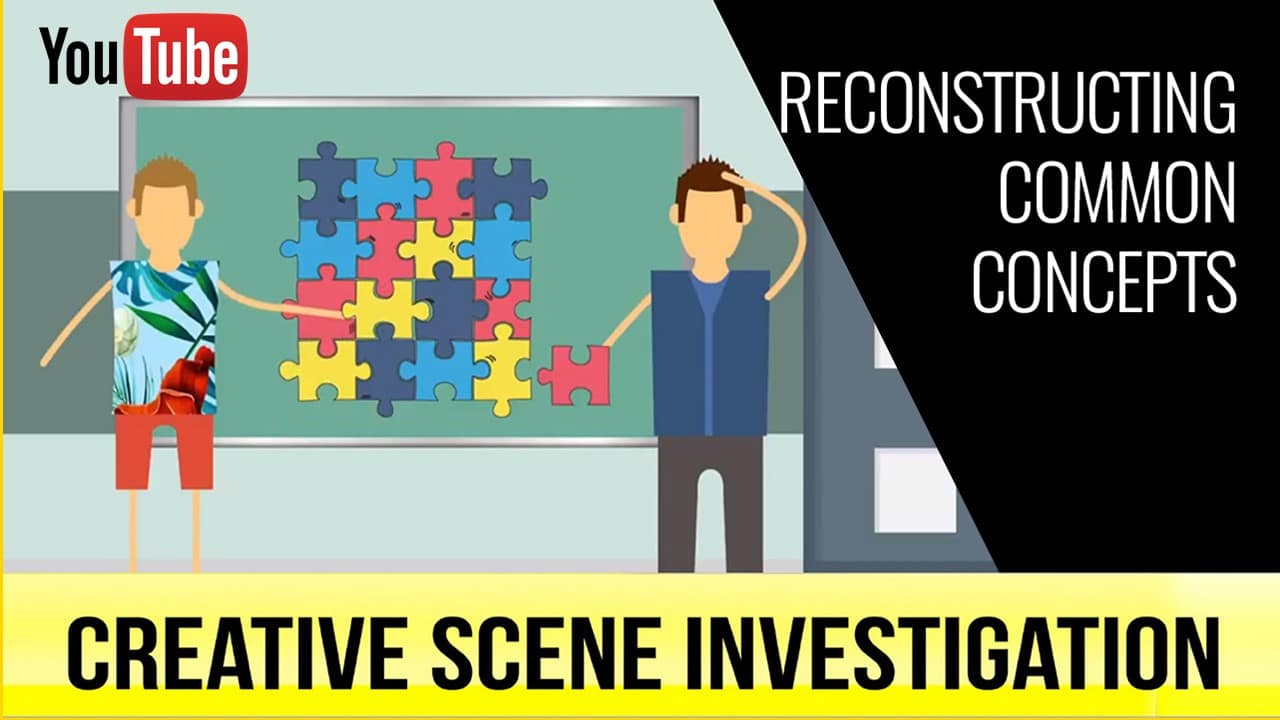Part 5: Reconstruct Common Concepts
By Gaia Grant
It might seem surprising, but being creative often first means being destructive. The great inventors of new products aren’t simply adding to what they’ve seen before, they critically question and challenge the standard ways of doing things, and then they look for fresh new angles to build on.
Think of how the inventor of the Dyson vacuum cleaner threw away the old suction concept and ground-based machine and literally turned the traditional vacuum on its head. Or how the inventors of the GPS stripped navigating back to the core and reinvented the concept based on contemporary satellite technology.
Pulling apart common ideas
If you don’t question and challenge the standard ways of doing things you can end up just repeating what’s already been done before. Yet how many of us have the courage or patience to pull something apart and start over again?
Researchers at MIT have found that some of the biggest engineering challenges have been solved by bringing in non-engineers. Sometimes it’s the people who are not the experts who can more easily see the flaws with the old system and come up with fresh alternatives.
This strategy to prepare for the creative thinking and design thinking process is about continually pulling apart common ideas and putting them back together in new ways. Creative ideas often come from joining two apparently unrelated ideas together, so finding the hidden link between two contrasting concepts can lead to powerful results.
When asked what his scientific thought process looked like, Einstein would say that he’d take an image in his mind and play around with it and manipulate it, looking at it from different angles — combining and breaking things apart.
Integrate to elevate
At the core of creative thinking is the concept of ‘Integration’, which is being able to join two diverse and separate elements together to come up with one combination solution. Kitesurfing is the combination of a kite and a surfboard. A wheelchair is a combination invention of a chair on wheels.
The problem of fatal train crashes through ‘overriding’, where one carriage rides up over the top of the other, was solved when an engineer saw a crushable drink bottle and thought of bringing the same principles to train design.
Our research shows that whilst children are naturally good at this, most adults find this strategy very difficult. But to ensure there is a productive creative output the final product must be more than sum of the parts combined. Effective creative thinking is all about coming up with the next 1+1= 3.
To achieve extraordinary results, you may need to disassemble familiar concepts and make completely new connections.
Reflection questions:
- Is this area a strength or a challenge area for you? Do you feel comfortable confronting the standard ways of doing things and pulling them apart, or is that difficult for you to do?
- How often have you found yourself wondering, “Why didn’t I think of this before?” How can you start to be more open to the principle of reconstruction?
- Identify when you may have missed the opportunity to come up with a combination solution. Example: retail company that combined online and store service on the same P&L to give the customer a better experience.
Exercises to practice this strategy:
- Pull apart an existing invention to examine the original ideas and trace how it might have been put together. Consider what the critical concept behind the invention is, and how that concept could be explored differently.
- Think of two non-related items and try to combine them to come up with a new invention, whereby the final product is to be more than sum of the parts combined. Examples: wheelchair, smart phone.
Though this stage of the creative design thinking process can be incredibly challenging, it can also be highly rewarding.
If you are interested in learning more about “Reconstruct Common Concepts” as a key strategy to help develop creativity watch the video here and see a sneak peek at the at the other strategies to prepare for Design Thinking.

Gaia Grant (PhD) is a lecturer and researcher at the University of Sydney Business School in the Discipline of Strategy, Innovation, and Entrepreneurship, focusing on research into innovation paradoxes and ambidextrous leadership. Gaia is also a Director of Tirian Innovative Solutions, & the co-author (with Andrew Grant) of a number of books including ‘The Innovation Race’, and “Who Killed Creativity?”.

Andrew Grant is the Director of Tirian Innovative Solutions, and co-author (with Dr Gaia Grant) of a number of books including ‘The Innovation Race’, and “Who Killed Creativity?”.



